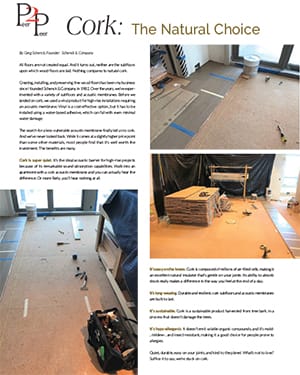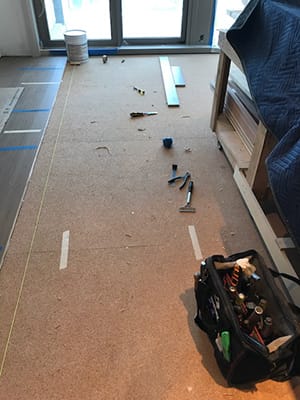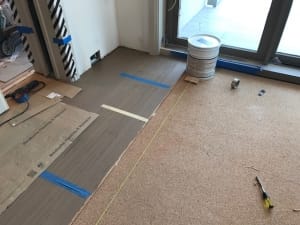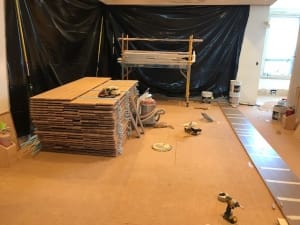The Angle, Spring 2018, Peer 2 Peer
by by Greg Schenck
Founder, Schenck & Company
Cork: The Natural Choice. All floors are not created equal. And it turns out, neither are the subfloors upon which wood floors are laid. Nothing compares to natural cork.
Creating, installing, and preserving fine wood floors has been my business since I founded Schenck & Company in 1982. Over the years, we’ve experimented with a variety of subfloors and acoustic membranes. Before we landed on cork, we used a vinyl product for high-rise installations requiring an acoustic membrane. Vinyl is a cost-effective option, but it has to be installed using a water-based adhesive, which can fail with even minimal water damage.
The search for a less-vulnerable acoustic membrane finally led us to cork. And we’ve never looked back. While it comes at a slightly higher price point than some other materials, most people find that it’s well worth the investment. The benefits are many.
Cork is super quiet. It’s the ideal acoustic barrier for high-rise projects because of its remarkable sound-absorption capabilities. Walk into an apartment with a cork acoustic membrane and you can actually hear the difference. Or more likely, you’ll hear nothing at all.
It’s easy on the knees. Cork is composed of millions of air-filled cells, making it an excellent natural insulator that’s gentle on your joints. Its ability to absorb shock really makes a difference in the way you feel at the end of a day.
It’s long-wearing. Durable and resilient, cork subfloors and acoustic membranes are built to last.
It’s sustainable. Cork is a sustainable product harvested from tree bark, in a process that doesn’t damage the trees.
It’s hypo-allergenic. It doesn’t emit volatile organic compounds, and it’s mold-, mildew-, and insect-resistant, making it a good choice for people prone to allergies.
Quiet, durable, easy on your joints, and kind to the planet. What’s not to love? Suffice it to say, we’re stuck on cork.






